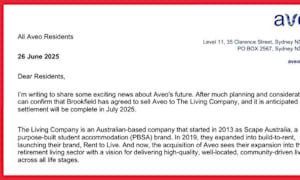The numbers are big - but the complexities are bigger.
Over the past week, we have been having discussions on the major rethink required by operators, architects and key suppliers in the new world of COVID.
The pipeline of refurbishment and new development work already on the books is eye-popping. In fact, it exceeds $170B across Concept stage ($25B), Design ($110B), Pre-Construction ($27B) and Construction ($10B).
But with COVID, the economy, residents and families scared of entering structured accommodation, will this work go ahead?
Development teams being ‘let go’
Several of our aged care clients have ‘let go’ their entire development teams.
Recently acquired blocks of land are being sold off. Long established operators are leaving the sectors, like PresCare this week in QLD.
At the same time, there are a large number of operators that are snapping up these parcels of land. Long standing property broker, Russell Allison, was telling us of an aged care property for which he had 32 confidentiality agreements signed, the most for one property in his long career.
Basic drivers - $170B required
And the basic drivers remain. 65% of villages are older than 25 years and need to be renovated (think Brookfield and its purchase e.g. Aveo).
Grant Corderoy of StewartBrown has a soap box out at every opportunity to explain that aged care homes have to be refreshed every eight years and completely renovated after 15 years to remain compliant and market competitive - this is from an accountant! After 35 years it will need to be pulled down, he says.
At least a third of 200,000 beds are in this rework box.
Meanwhile the Government has its target ratio of 7.8 residential beds for every Australian over the age of 70. This year approximately 95,000 people will turn 70, requiring 7,410 new beds to be built. After natural deaths and decommissioning, this will still be around 7,000 beds.
You can see where the $170B can be spent.
But will customers want this product? Will the banks fund it and just as importantly, will staff want to work in them with COVID now with us?
Villages and aged care product in a COVID world
They have prepared an internal discussion paper, which they shared with us.
It talks about ‘safely maximising interaction with the outside world’, high-tech that delivers virtual socialisation, and providing Real/Virtual ‘wobble rooms’ for staff – to provide a comfortable and reassuring place for staff to go to when stressed and feeling overwhelmed.
Frank gave us this chart below as a taste. Marchese strategises that three zones may be required in aged care homes from now on:
Marchese sees new concepts like:
- PPE lobbies leading to care suite doors (air locks with integral hand wash basin and PPE supply/disposal)
- Staff changing facilities adjacent airlock so no-one enters or exits building in same clothes
- Room to be used for ‘funeral’ service – with potential for glass screen and external access for family members to access
- Replacing high touch surfaces with materials that have antimicrobial properties – or avoid touching altogether
- Provide food pre-wash area at delivery point
- Dirty/Clean routes can be employed
- One way systems traffic can be employed
- Provide separate air handling systems to specific rooms/houses
- Provide sleeping quarters for care staff and access to a separate outside space
- Provide meals for staff, to minimize private grocery shop requirements (minimizing contact risk)
It is worth noting the fact that we should still be defending the residents right to a homelike environment. After all, we do not want aged care looking like hospitals again.
Village operators may have to think about similar long-term plans.
Additional capital investment required
Frank points out that a rethink will be required on the capital investment that is required, across both retirement living and aged care. The price will go up.
He sees a horizon of the next five years. (This is just 60 months).
At even $100B spread across these five years, we are talking $20B a year or $1.7B a month.
The numbers are big.
Will the banks fund it?
Will the customers buy it?
Will the boards back it?
You will need confidence - and knowledge.
If you would like the Marchese discussion paper, you can email
Frank here.













